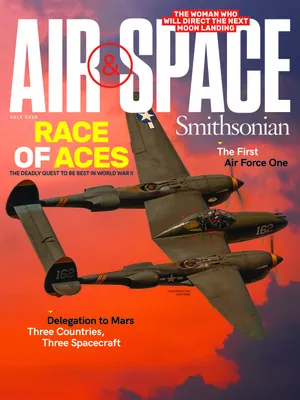Journeys to Other Worlds
From the Director of the Smithsonian’s National Air and Space Museum
:focal(1682x969:1683x970)/https://tf-cmsv2-smithsonianmag-media.s3.amazonaws.com/filer/64/d7/64d72161-4f14-405a-a268-3f172b008583/25b_jj2020_walkingworlds0381-205-etp_final_live.jpg)
NASA’s Discovery Program, which supports solar system exploration, recently selected four proposals to develop into concept studies, an important step in choosing future missions. Scientists from our own Center for Earth and Planetary Studies (CEPS) are working on three of those four potential missions—DAVINCI+, VERITAS, and Trident—a reminder that our Museum doesn’t only commemorate the history of space exploration, it also plays a significant role in the ongoing study of our solar system.
I could not be prouder of the CEPS scientists who have seen their proposals through to this exciting stage of development. (You can read more about CEPS on page 18.) I hope they are each able to enjoy the sublime experience (for planetary geologists) of sending their space probes to other worlds. But I want to take a moment to note how much important work has already gone into each of these proposals, and why their selection to advance to the next stage of study represents an important victory for the science—and scientists—involved. I know from personal experience.
Several years ago, before I became a museum director or NASA Chief Scientist, I led a team that developed a Discovery mission proposal. We spent years crafting and honing the concept, which would have studied the methane seas of Saturn’s frozen moon Titan. And although it was not selected to fly, it laid important groundwork and focused attention on that faraway icy moon, now the target of a new mission scheduled to arrive in 2034.
As President John F. Kennedy said during the Apollo era, space exploration must be bold—because bold ideas, even if never fully realized, challenge and change us in the best possible ways. One of the bold new Discovery missions would visit far-off Triton, Neptune’s largest moon, where we hope to learn how potentially habitable worlds could form billions of miles from a star. But no matter which of the four proposals NASA selects—and I wish they could afford to pick all of them—all of these projects have helped to move the field of planetary science forward. And on behalf of our Museum, congratulations to everyone who worked to get to this point—after years of long days and late nights. They have so much to be proud of and so much exciting work left to be done.
